Abstract
Rats' responding was stabilized for over 35 days on 4-min variable-interval reinforcement. Reinforcements per hour for 4-sec wide classes of interresponse times were then separately controlled by adjusting those for each class to the variable-interval values that had just prevailed. This produced little or no change in interresponse times, indicating that the new procedure was substantially equivalent to a variable-interval schedule. The variable-interval schedule produced a high and stable conditional probability of interresponse times in the 0- to 4-sec class, associated with a peak in reinforcements per hour for this class. Reducing the reinforcements per hour for this class while raising that for another class (by 3.3 reinforcements per hour) significantly reduced the conditional probability of 0- to 4-sec interresponse times. Restoring the 3.3 reinforcements per hour to the 0- to 4-sec class significantly elevated the conditional probability of interresponse times in this class. Hence, it is concluded that the distribution of interresponse times produced by a subject during some variable-interval schedules is determined partly by the relative reinforcement of different interresponse times that the variable-interval schedule provided.
Reprinted from Part II of the Final Report of Research under Contract DA-49-007-MD-408 with the Medical Research and Development Board, Office of the Surgeon General, Department of the Army, 31 December 1954. Edwin B. Newman, Responsible Investigator; Douglas Anger, Research Assistant and author of report. Experimental work done in the Psychological Laboratories of Harvard University.
Full text
PDF
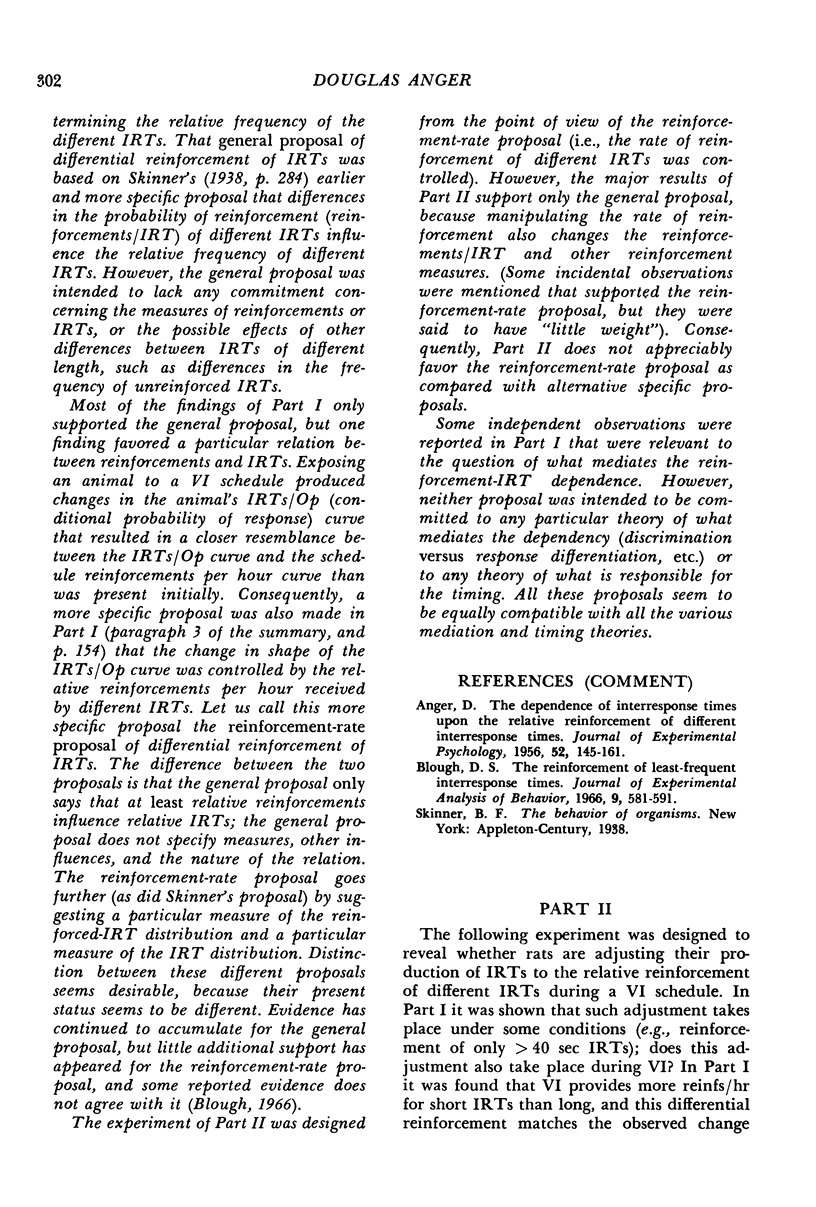
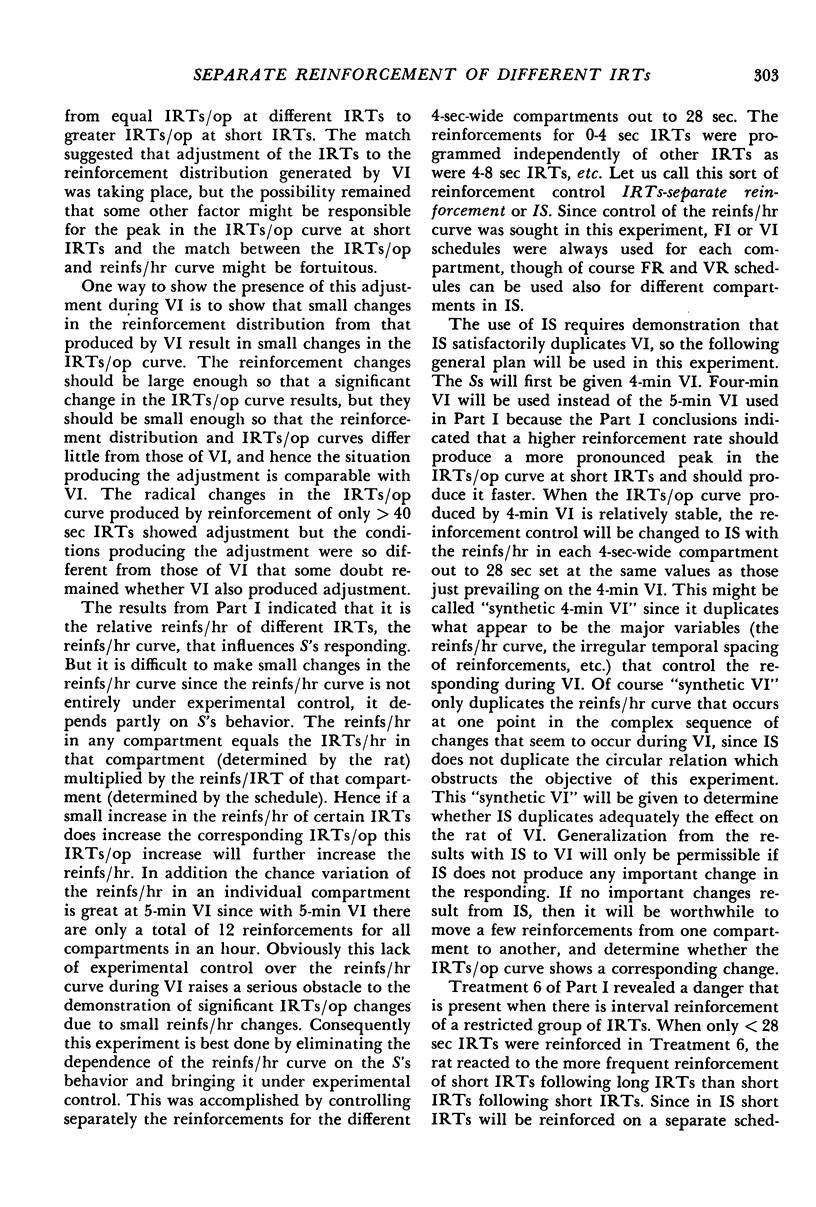

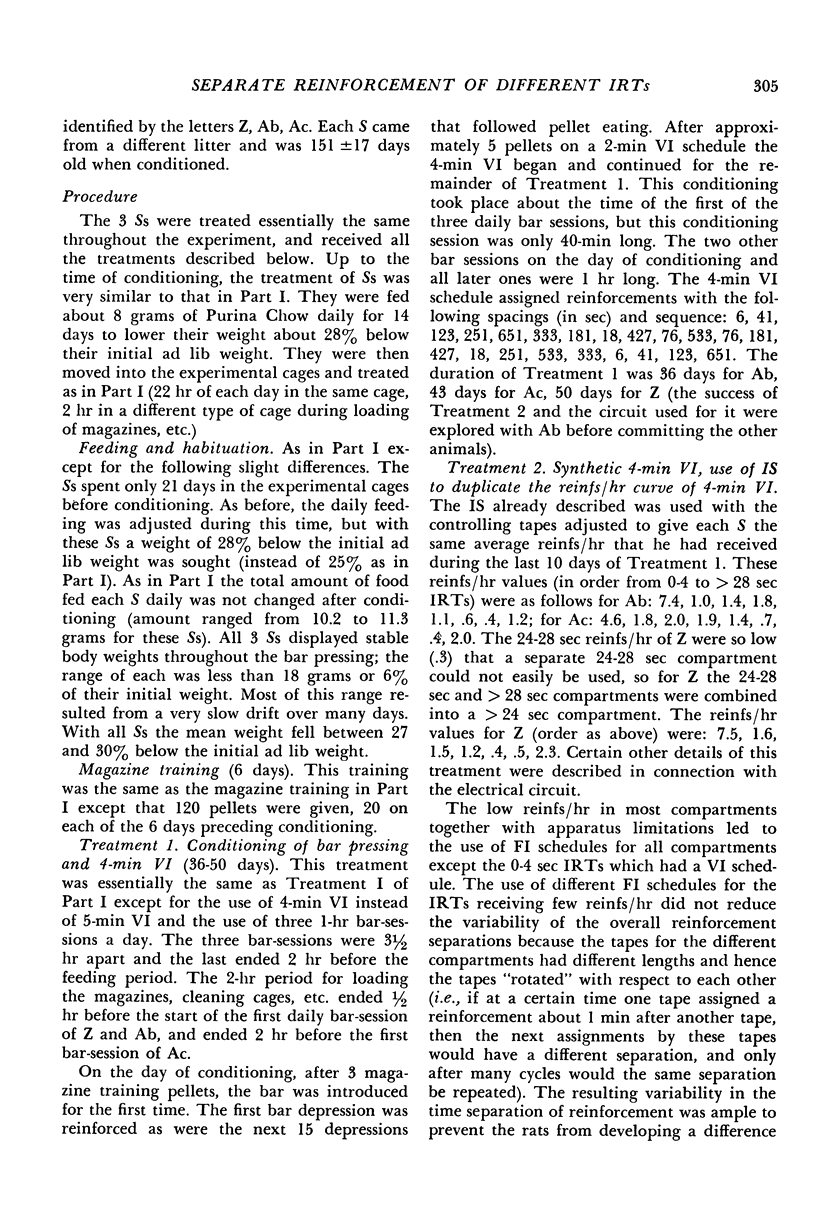
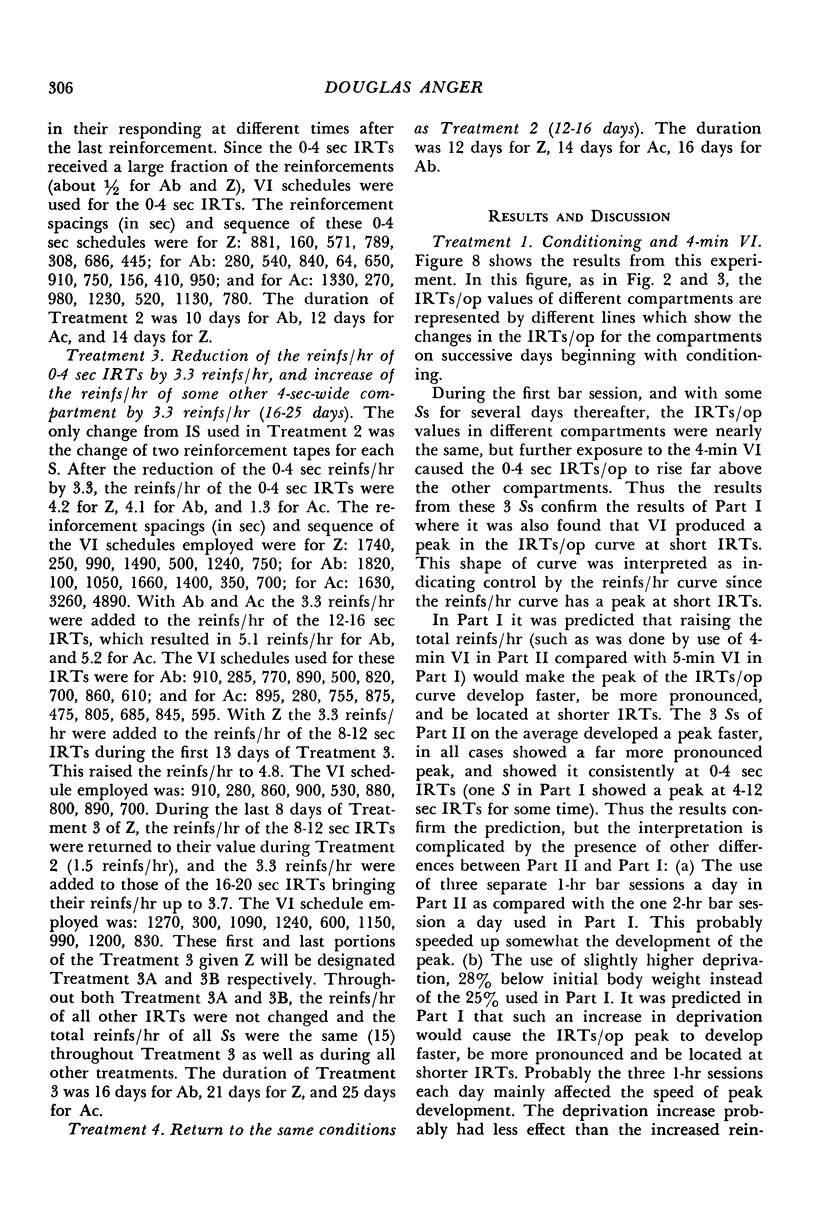
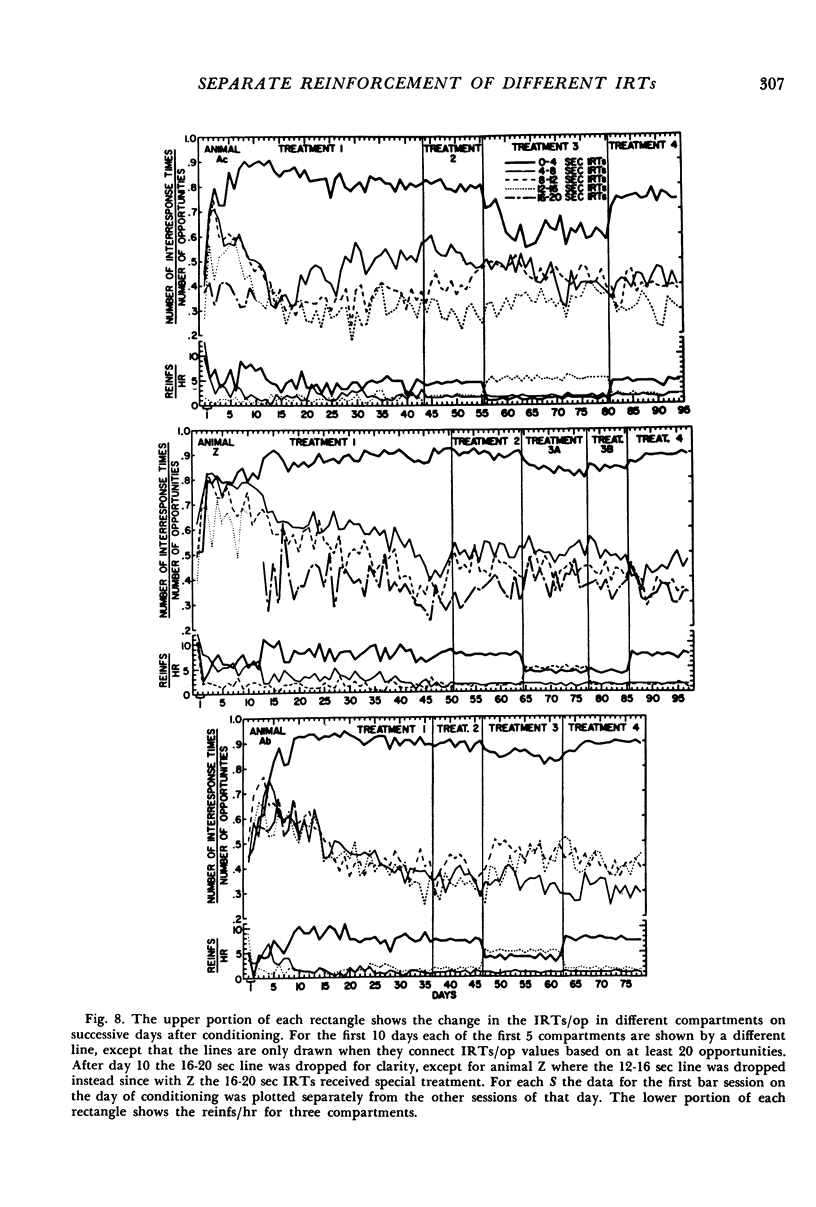
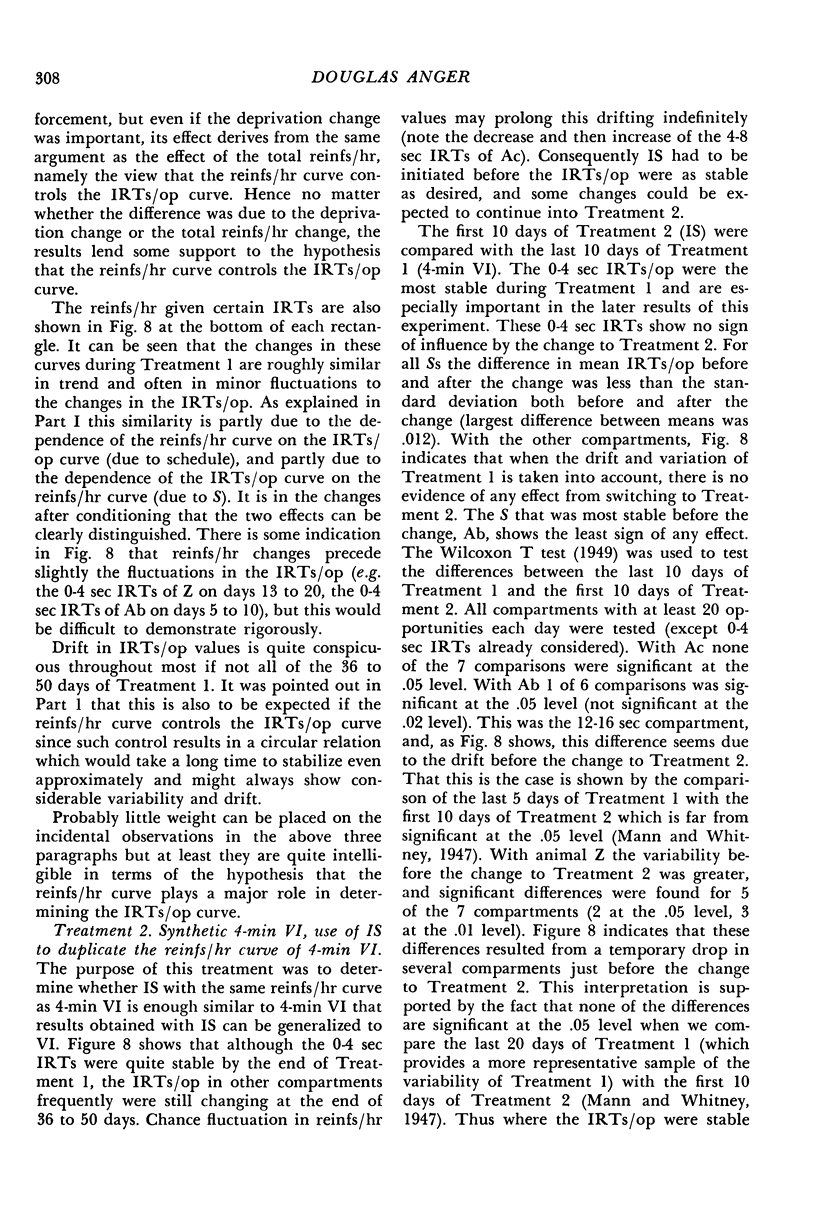
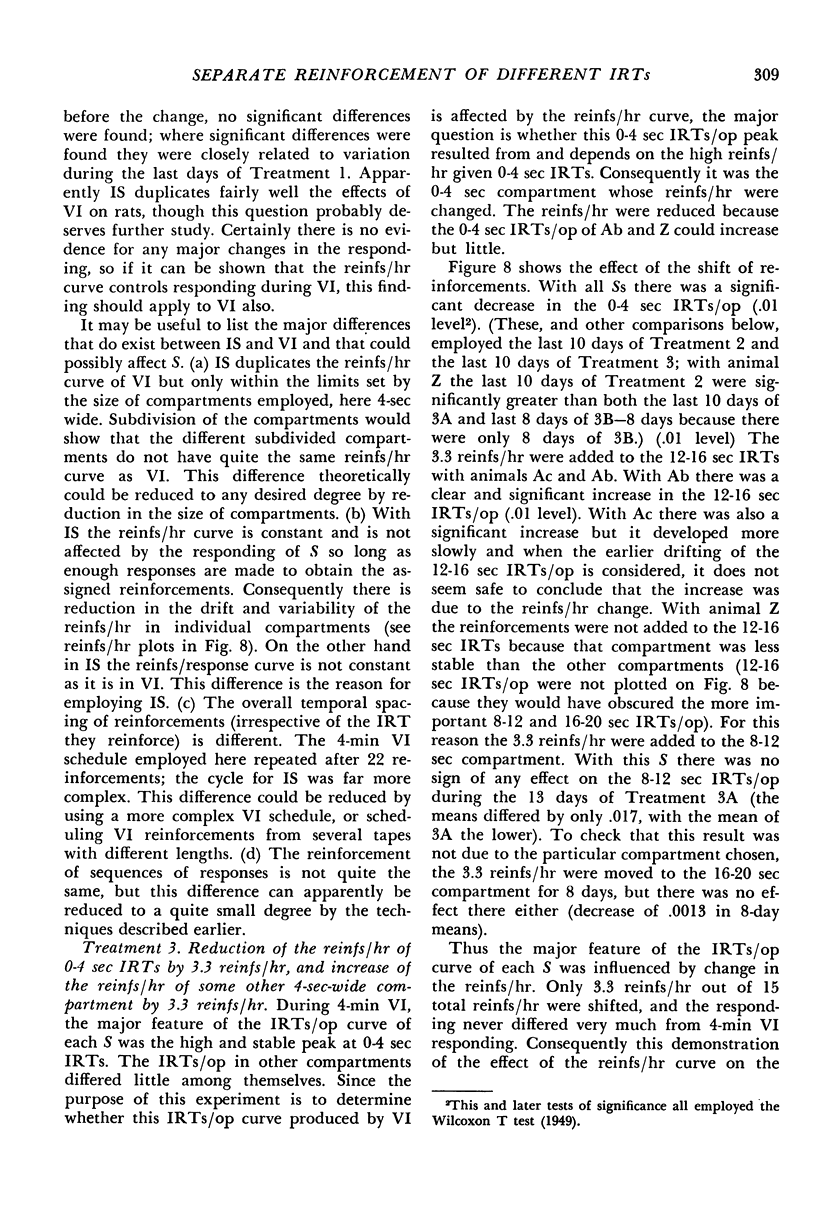
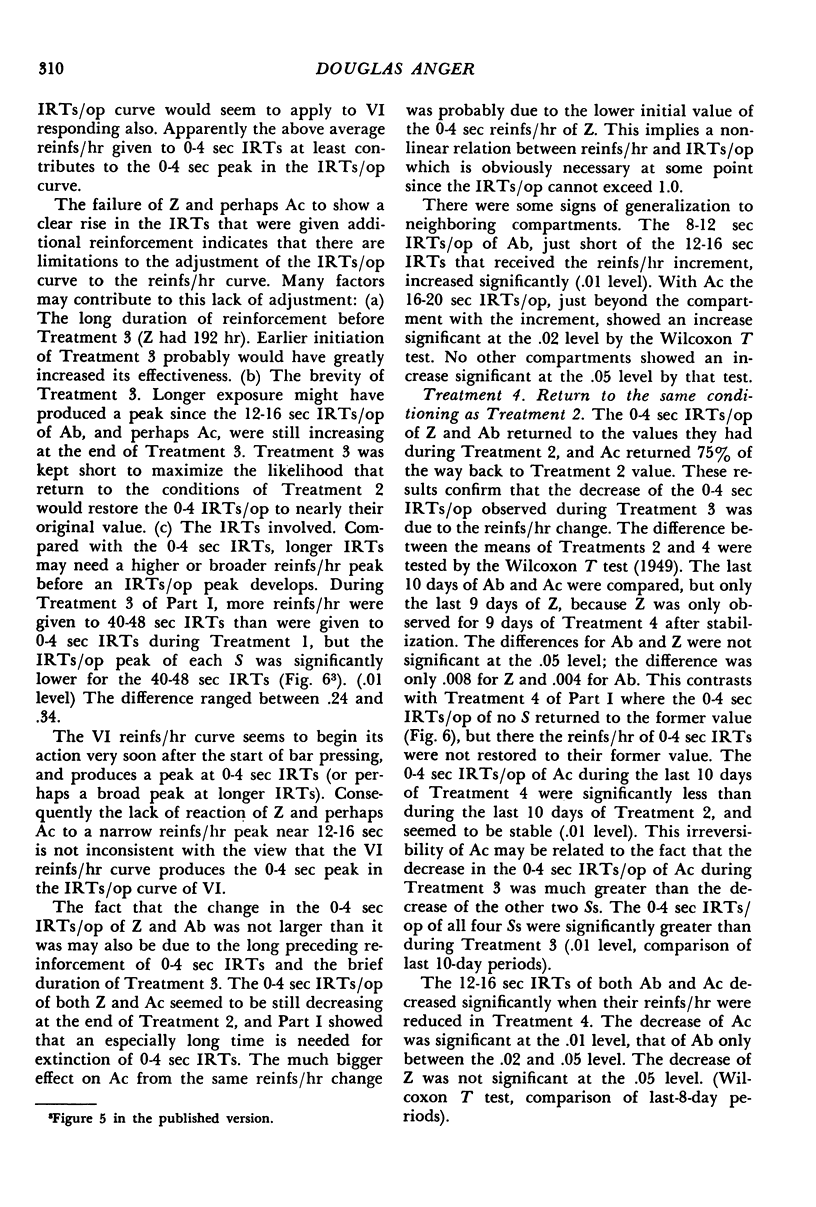
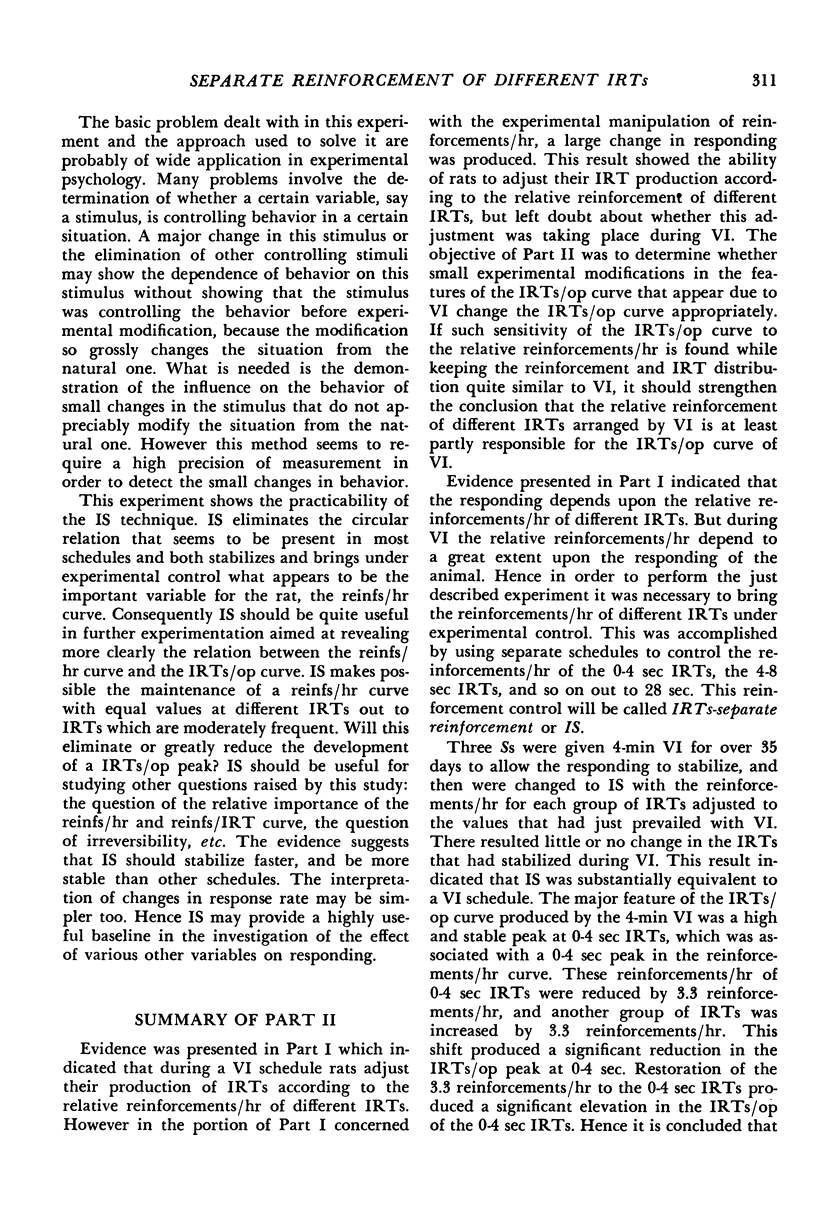
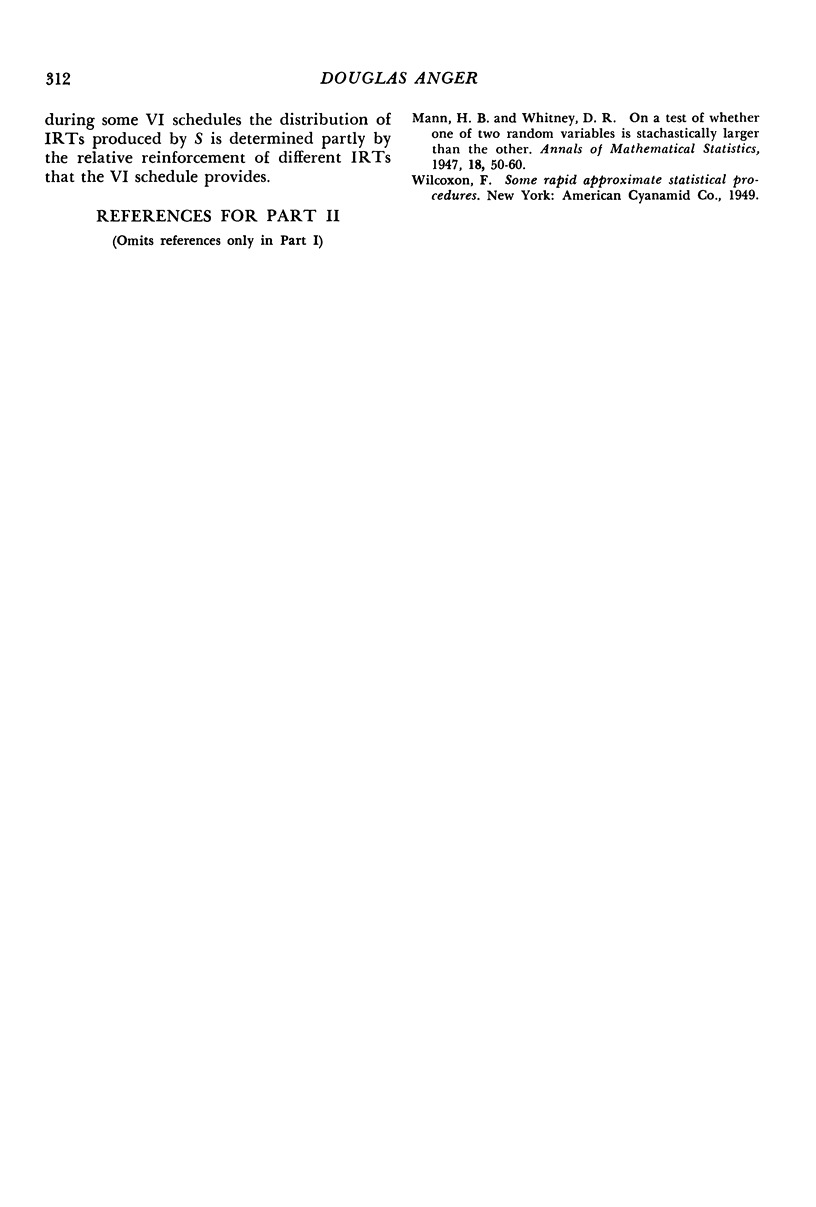
Selected References
These references are in PubMed. This may not be the complete list of references from this article.
- ANGER D. The dependence of interresponse times upon the relative reinforcement of different interresponse times. J Exp Psychol. 1956 Sep;52(3):145–161. doi: 10.1037/h0041255. [DOI] [PubMed] [Google Scholar]
- Blough D. S. The reinforcement of least-frequent interresponse times. J Exp Anal Behav. 1966 Sep;9(5):581–591. doi: 10.1901/jeab.1966.9-581. [DOI] [PMC free article] [PubMed] [Google Scholar]


